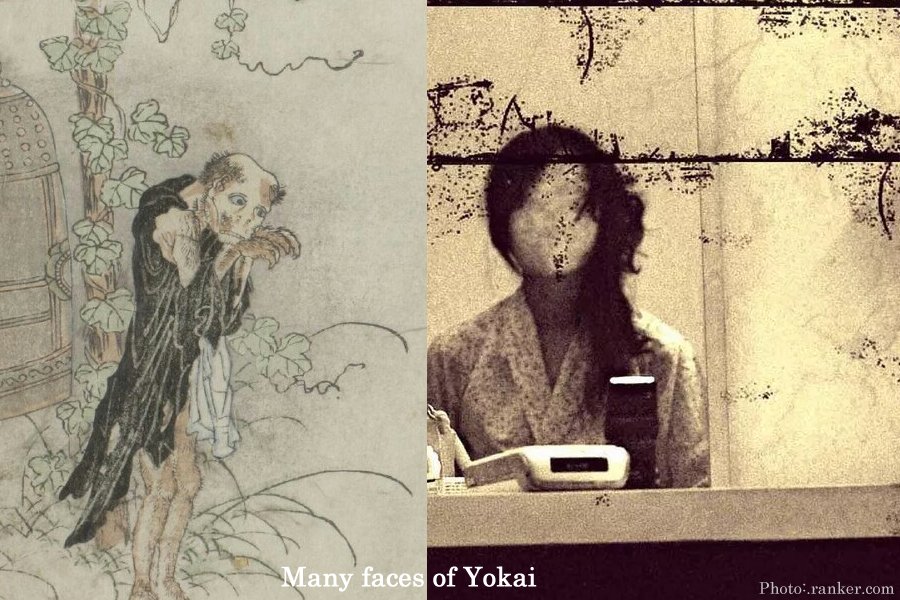Yokai (Yōkai): Mysterious Interdimensional Force With Odd Abilities In Japanese Mythology
A. Sutherland - AncientPages. com - There is a mysterious force that in Japan is known as Yokai (“Yōkai”).
According to ancient Japanese beliefs, Yōkai (in Chinese: 'kanji', which means “strangeness, mystery, or suspicion”) are weird creatures that dwell in the borderlands and in spaces, which are located “in-between”.
The Ground Spider , October 1892. From the Thirty-six Ghosts series. 9.25" x 14.25". The print depicts Minamoto no Yorimitsu attacking a ground spider monster. Image credit: Tsukioka Yoshitoshi - Art Gallery NSW - Public Domain
The belief in Yōkai was mentioned in “Shoku Nihongi” text dated to the eighth-century and still, this ancient belief is alive in the Japanese modern society.
Yokai can take many different forms and are mostly associated with villages, old abandoned towns, deserted mountain passes.
Yōkai does not belong to anybody. They just exist, appear usually at twilight, when our surroundings look strange and are difficult to recognize. They haunt bridges and tunnels, entranceways, and lurk and disturb at crossroads and thresholds; they are elsewhere, changing their forms and places.
Research suggests that this creature dwells in the contact zone between fact and fiction, between belief and doubt. Yōkai is the common name for monsters, transformed humans and animals, demons, spirits, or goblin.
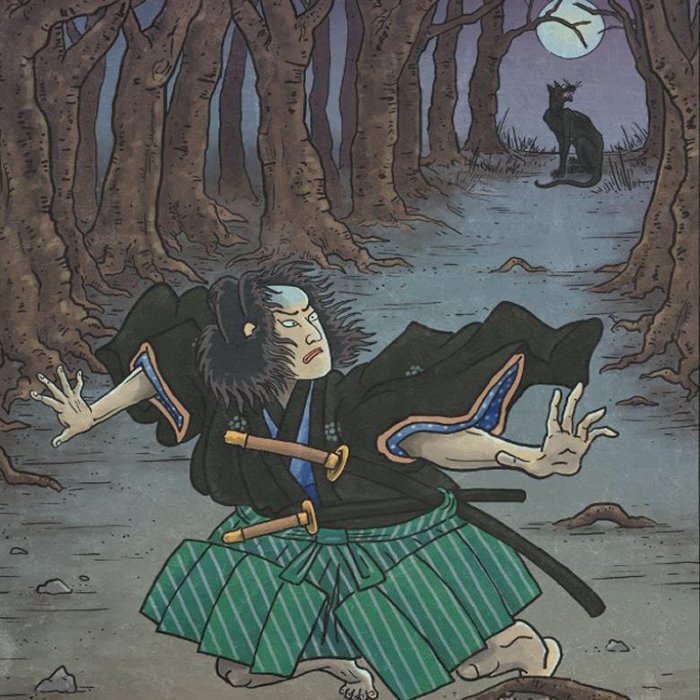
They haunt bridges and tunnels, entranceways, and lurk and disturb at crossroads and thresholds; they are elsewhere, changing their forms and places. Image credit: Mathew Meyers Yokai.com
People say they are simply monsters. Their nature varies from benign to mischievous to seriously scary.
In his book "The Book of Yokai: Mysterious Creatures of Japanese Folklore", which is based on his long study of Yokai, M.D. Foster, mentions an intriguing and unpleasant story from "A Collection of Tales from Uji, c. 1220" -m (Uji shūi monogatari).
This story tells of "a monk traveling alone through the province of Settsu, located in the vicinity of the present-day city of Osaka.
Coming upon a deserted temple, he decides to settle in for the night and begins chanting an incantation to the guardian deity Fudō, who battles evil with his immovable faith and compassion.
But suddenly, “a crowd some hundred strong came surging into the temple, every one of them with a torch in his hand.
When they got close, he saw that they were fantastically weird creatures, not men at all; there were all sorts of them, some with only one eye, some with horns, while their heads were more terrible than words can describe.”
The monk spends a terrifying night, surviving only because Fudō protects him. After the gang of oni finally leaves and the sun rises, the monk is shocked to discover that there is actually no temple at all and he cannot even find the path that brought him there.
Eventually, he meets some travelers who inform him that he is in the province of Hizen— hundreds of miles from Settsu!"
It is worth mentioning that "oni" is a term usually associated with danger and fear; this term is generally translated today as “demon” or “ogre.”
During the Heian period, "oni" meant a nasty and threatening creature, that frequently appeared in human-like form. "Oni" has enormous evil power and when engaged in the fight, these terrible creatures can reattach body parts they lose in fights.
They crush the enemy with one blow from their spiked iron club (kanabo; they can also fly, change form at will and cause diseases, insanity, and death. Their favorite food is human flesh.
Were these terrible "oni" creatures responsible for teleportation of the monk to another, very distant location? What did really happen to him?
Written by – A. Sutherland AncientPages.com Staff Writer
Copyright © AncientPages.com All rights reserved. This material may not be published, broadcast, rewritten or redistributed in whole or part without the express written permission of AncientPages.com
Expand for referencesReferences:
Foster, M. D. The Book of Yokai: Mysterious Creatures of Japanese
More From Ancient Pages
-
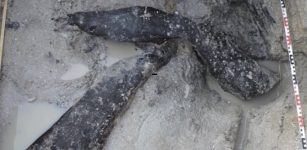 Discovery Of Half-Million-Year-Old Wooden Structure Shows We’re Wrong To Underestimate Our Ancient Relatives
Featured Stories | Oct 10, 2023
Discovery Of Half-Million-Year-Old Wooden Structure Shows We’re Wrong To Underestimate Our Ancient Relatives
Featured Stories | Oct 10, 2023 -
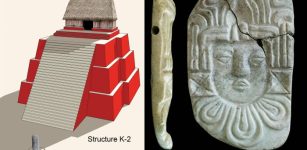 Fire-Burning Event At The Maya Kingdom Of K’anwitznal Was A Reaction To Regime Change
News | Apr 19, 2024
Fire-Burning Event At The Maya Kingdom Of K’anwitznal Was A Reaction To Regime Change
News | Apr 19, 2024 -
 Did Neanderthals And Modern Humans Meet In The Czech Republic 50,000 Years Ago?
Archaeology | Jun 17, 2017
Did Neanderthals And Modern Humans Meet In The Czech Republic 50,000 Years Ago?
Archaeology | Jun 17, 2017 -
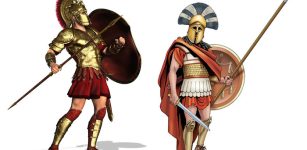 Who Were The Hoplites And What Was Their Armor Composed Of?
Ancient History Facts | Apr 20, 2018
Who Were The Hoplites And What Was Their Armor Composed Of?
Ancient History Facts | Apr 20, 2018 -
 Italian Sailors Knew Of America 150 Years Before Christopher Columbus – Ancient Documents Reveal
Archaeology | Oct 8, 2021
Italian Sailors Knew Of America 150 Years Before Christopher Columbus – Ancient Documents Reveal
Archaeology | Oct 8, 2021 -
 Fascinating Virtual Avatar Of Mysterious Egtved Girl Created – What Is Her Story?
Archaeology | Dec 19, 2022
Fascinating Virtual Avatar Of Mysterious Egtved Girl Created – What Is Her Story?
Archaeology | Dec 19, 2022 -
 Utsuro Bune: Ancient Extraterrestrial Encounter With A ‘Hollow Ship’ And An Alien Visitor
Featured Stories | Jun 11, 2020
Utsuro Bune: Ancient Extraterrestrial Encounter With A ‘Hollow Ship’ And An Alien Visitor
Featured Stories | Jun 11, 2020 -
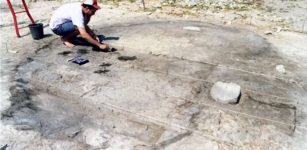 Survivors Of The Latest Ice Age Thrived Near The Sea Of Galilee 23,000 Years Ago
Archaeology | Jan 27, 2022
Survivors Of The Latest Ice Age Thrived Near The Sea Of Galilee 23,000 Years Ago
Archaeology | Jan 27, 2022 -
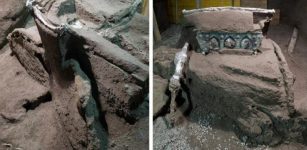 Extraordinary Ancient Roman Ceremonial Chariot Discovered In Pompeii – It’s Still Almost Intact
Archaeology | Mar 1, 2021
Extraordinary Ancient Roman Ceremonial Chariot Discovered In Pompeii – It’s Still Almost Intact
Archaeology | Mar 1, 2021 -
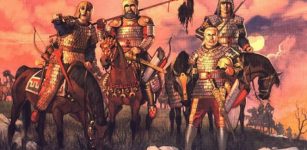 Will Ancient DNA Unravel History Of The Scythians From Central Asian Steppe?
Archaeology | Mar 29, 2021
Will Ancient DNA Unravel History Of The Scythians From Central Asian Steppe?
Archaeology | Mar 29, 2021 -
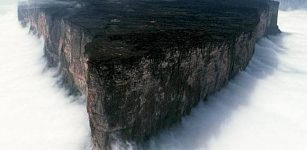 Mysterious Mount Roraima Surrounded By Myths And Clouds Of Dense Fog
Featured Stories | Nov 13, 2018
Mysterious Mount Roraima Surrounded By Myths And Clouds Of Dense Fog
Featured Stories | Nov 13, 2018 -
 On This Day In History: First Recorded Passage Of Halley’s Comet Observed By Chinese Astronomers – On Mar 30, 240 BC
News | Mar 30, 2016
On This Day In History: First Recorded Passage Of Halley’s Comet Observed By Chinese Astronomers – On Mar 30, 240 BC
News | Mar 30, 2016 -
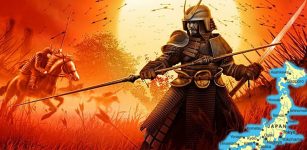 The Bushido Code: Centuries-Old Unwritten Code For Ideal Samurai Warrior
Featured Stories | Dec 26, 2016
The Bushido Code: Centuries-Old Unwritten Code For Ideal Samurai Warrior
Featured Stories | Dec 26, 2016 -
 Tool Patterns Reveal What Caused The Neanderthals’ Extinction In The Iberian Peninsula
Archaeology | Mar 30, 2022
Tool Patterns Reveal What Caused The Neanderthals’ Extinction In The Iberian Peninsula
Archaeology | Mar 30, 2022 -
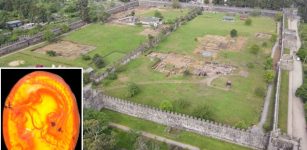 Roman Fort Of Apsaros Reveal Some Of Its Archaeological Secrets
Archaeology | Nov 7, 2023
Roman Fort Of Apsaros Reveal Some Of Its Archaeological Secrets
Archaeology | Nov 7, 2023 -
 Mount Ararat Was Once Located By The Sea – Study Of Palm Leaves Reveals
Archaeology | Jul 18, 2020
Mount Ararat Was Once Located By The Sea – Study Of Palm Leaves Reveals
Archaeology | Jul 18, 2020 -
 Long Serpent: Most Famous Viking Longship Of King Olav Tryggvason Of Norway And Its Fate
Featured Stories | Jun 7, 2017
Long Serpent: Most Famous Viking Longship Of King Olav Tryggvason Of Norway And Its Fate
Featured Stories | Jun 7, 2017 -
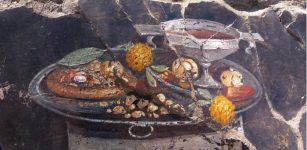 Ancestor Of Italian Pizza Depicted On Fresco In Pompeii
Archaeology | Jun 28, 2023
Ancestor Of Italian Pizza Depicted On Fresco In Pompeii
Archaeology | Jun 28, 2023 -
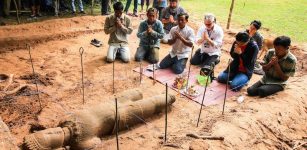 Large Statue Of Ancient Guardian Discovered At Angkor Wat
Archaeology | Aug 7, 2017
Large Statue Of Ancient Guardian Discovered At Angkor Wat
Archaeology | Aug 7, 2017 -
 Three Ingots Shed Light On The Mining Exploitation Of The Sierras de Córdoba Mountain Range
Archaeology | May 8, 2024
Three Ingots Shed Light On The Mining Exploitation Of The Sierras de Córdoba Mountain Range
Archaeology | May 8, 2024


